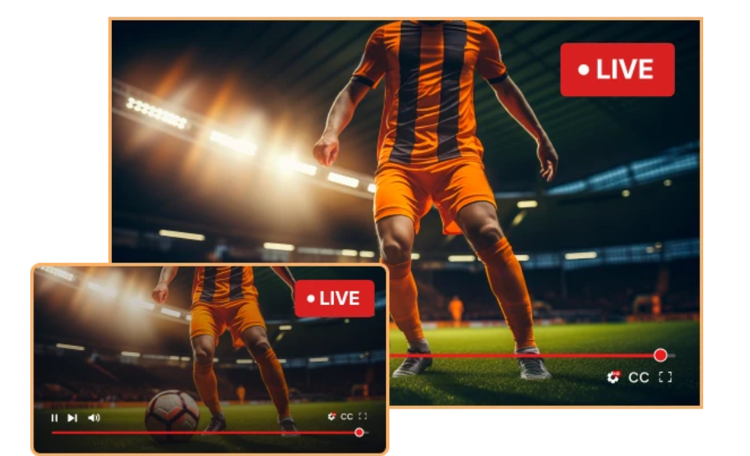Beyond Dawlish
Introduction

The rise of digital media consumption has led to an increasing demand for sports streaming platforms. Developers looking to create an app that enables live audio and video streaming for sports content have numerous opportunities to generate revenue through monetization models like subscriptions, advertisements, and pay-per-view. This article serves as a comprehensive guide for developers seeking to build a sports streaming platform that ensures a seamless user experience while maximizing revenue.
1. Define Your Target Audience
Before diving into development, understanding your target audience is crucial. Whether it's local sports leagues, international tournaments, or niche sports enthusiasts, identifying your audience helps tailor features and monetization strategies accordingly.
2. Choose the Right Technology Stack
A sports streaming platform requires a robust technology stack to ensure smooth and lag-free streaming. Consider these essential technologies:
-
Frontend: React, Angular, or Vue.js for user interface
-
Backend: Node.js, Django, or Ruby on Rails for server-side logic
-
Streaming Protocols: HLS (HTTP Live Streaming), RTMP (Real-Time Messaging Protocol)
-
Database: PostgreSQL, MongoDB, or Firebase
-
Cloud Storage & CDN: AWS, Google Cloud, or Azure for scalability and high-speed content delivery
3. Select a Reliable Hosting Platform
Choosing the right hosting platform is crucial for uninterrupted sports streaming. Platforms like Muvi, Dacast, Vimeo OTT, and Wowza offer excellent streaming services, including live broadcasting, on-demand videos, and built-in monetization options.
4. Implement High-Quality Streaming Features
Key features to include:
-
Live streaming & on-demand content
-
Multi-device compatibility (web, mobile, smart TVs)
-
Adaptive bitrate streaming for a seamless viewing experience
-
Cloud DVR for match replays
-
Interactive chat & engagement tools
5. Enable Multiple Monetization Strategies
To ensure long-term profitability, integrate multiple revenue models:
Subscription-Based (SVOD)
Users pay a recurring fee for unlimited access.
Pay-Per-View (PPV)
Charge users for exclusive live events.
Ad-Based (AVOD)
Monetize via ads before or during the stream.
Sponsorship & Affiliate Marketing
Collaborate with brands to generate revenue.
6. Optimize for Low Latency Streaming
Low latency is essential for live sports streaming to avoid delays. Implement:
-
WebRTC for real-time streaming
-
HLS with chunked transfer encoding
-
Content Delivery Networks (CDNs) for faster global streaming
7. Ensure Content Security
Protect your sports content with:
-
DRM (Digital Rights Management) to prevent piracy
-
Geo-restriction for region-based streaming rights
-
Tokenized authentication for authorized access
8. Improve User Experience with AI & Analytics
Utilizing AI-powered tools can enhance user engagement:
-
AI-based recommendations for personalized content
-
Real-time analytics to track viewer behavior
-
Chatbots & customer support automation
9. Scale with Cloud Infrastructure
Leverage cloud services like AWS, Google Cloud, or Microsoft Azure for scalability, cost efficiency, and disaster recovery. Cloud-based auto-scaling ensures seamless handling of traffic spikes during major sports events.
10. Test & Launch Your Platform
Before going live, conduct extensive testing:
-
Load Testing: Ensure the platform can handle peak traffic
-
Security Testing: Prevent data breaches and cyber threats
-
Cross-Device Testing: Optimize performance across devices
Conclusion
Building a sports streaming platform requires careful planning, the right technology stack, and an effective monetization strategy. Developers can capitalize on the booming demand for live sports content by implementing scalable solutions and engaging features. By leveraging the right tools, technologies, and revenue models, developers can create a high-performing and profitable streaming app.
FAQs
1. What is the best platform for sports live streaming? Several platforms like Muvi, Vimeo OTT, and Wowza offer excellent live streaming services with built-in monetization options.
2. How can I monetize my sports streaming app? Monetization options include subscriptions, pay-per-view, ad-based models, sponsorships, and affiliate marketing.
3. What technology is best for a sports streaming platform? Technologies like HLS, WebRTC, RTMP, and cloud-based CDNs help provide a high-quality streaming experience.
4. How do I ensure low latency in live sports streaming? Using adaptive bitrate streaming, chunked transfer encoding, and WebRTC can reduce latency.
5. How can I protect my sports content from piracy? Implement DRM, geo-blocking, and secure authentication methods to prevent unauthorized access.




